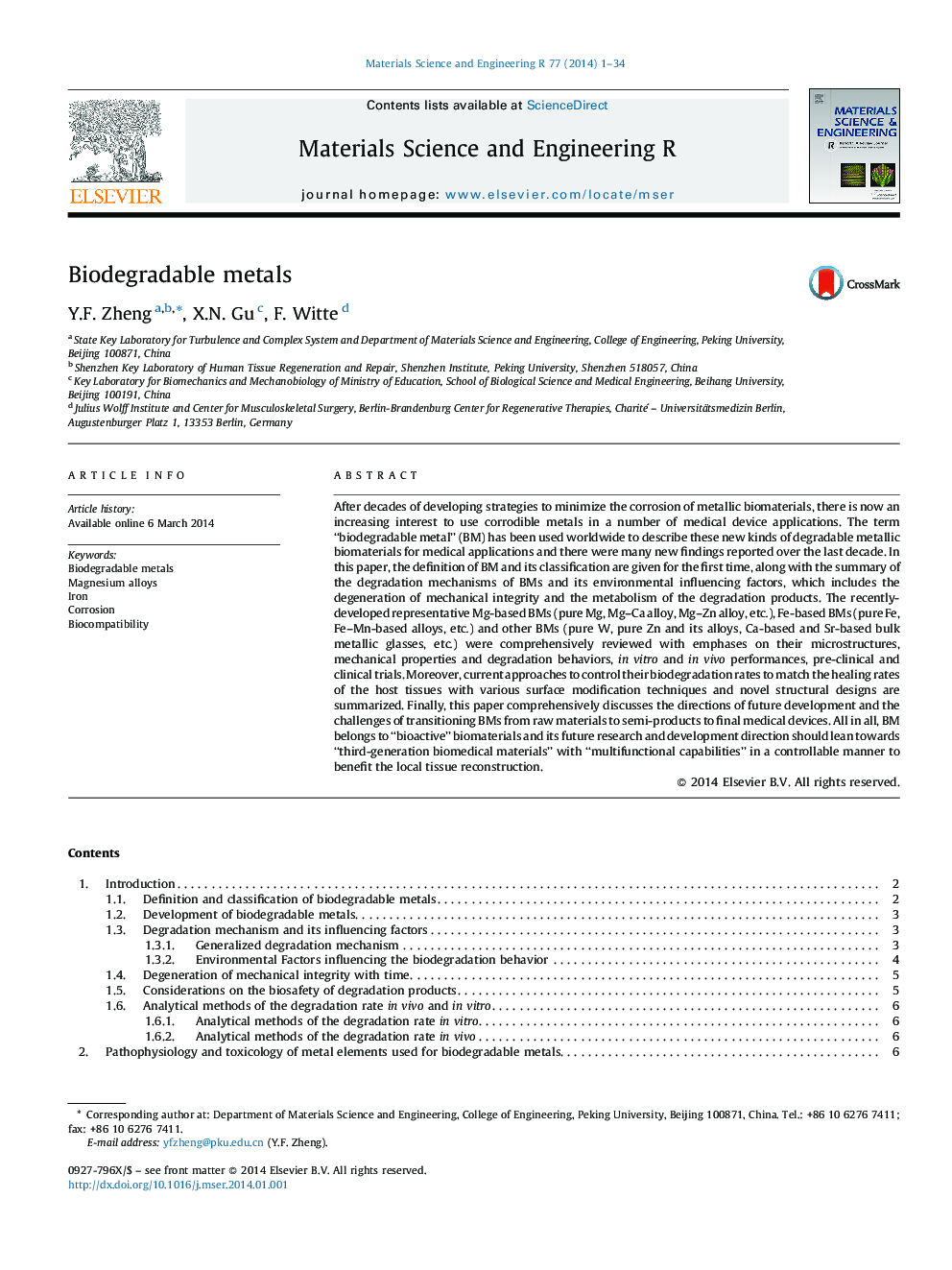| Article ID | Journal | Published Year | Pages | File Type |
|---|---|---|---|---|
| 1532395 | Materials Science and Engineering: R: Reports | 2014 | 34 Pages |
After decades of developing strategies to minimize the corrosion of metallic biomaterials, there is now an increasing interest to use corrodible metals in a number of medical device applications. The term “biodegradable metal” (BM) has been used worldwide to describe these new kinds of degradable metallic biomaterials for medical applications and there were many new findings reported over the last decade. In this paper, the definition of BM and its classification are given for the first time, along with the summary of the degradation mechanisms of BMs and its environmental influencing factors, which includes the degeneration of mechanical integrity and the metabolism of the degradation products. The recently-developed representative Mg-based BMs (pure Mg, Mg–Ca alloy, Mg–Zn alloy, etc.), Fe-based BMs (pure Fe, Fe–Mn-based alloys, etc.) and other BMs (pure W, pure Zn and its alloys, Ca-based and Sr-based bulk metallic glasses, etc.) were comprehensively reviewed with emphases on their microstructures, mechanical properties and degradation behaviors, in vitro and in vivo performances, pre-clinical and clinical trials. Moreover, current approaches to control their biodegradation rates to match the healing rates of the host tissues with various surface modification techniques and novel structural designs are summarized. Finally, this paper comprehensively discusses the directions of future development and the challenges of transitioning BMs from raw materials to semi-products to final medical devices. All in all, BM belongs to “bioactive” biomaterials and its future research and development direction should lean towards “third-generation biomedical materials” with “multifunctional capabilities” in a controllable manner to benefit the local tissue reconstruction.
